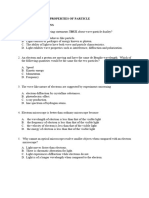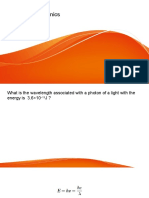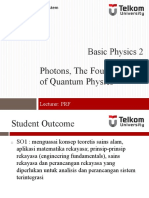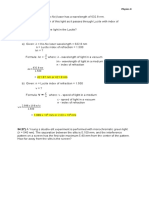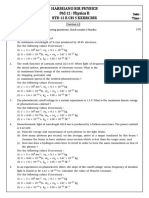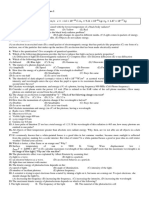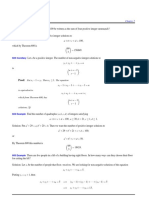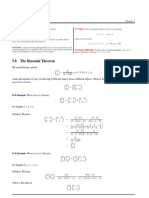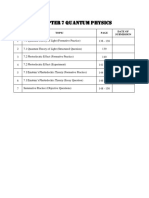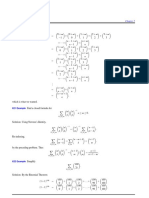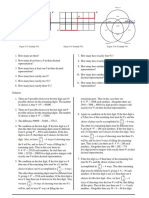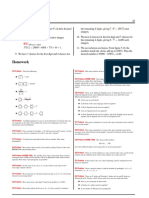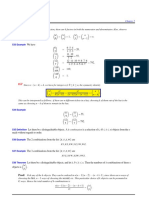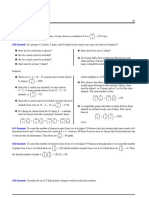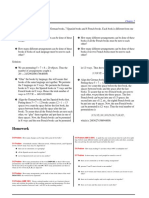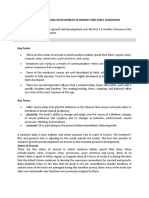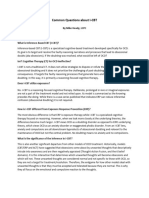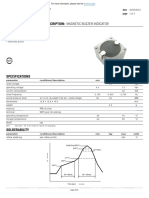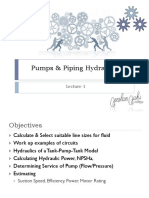Chapter 7 – Quantum Physics Physics Department - SMK Damansara Jaya
7.1 Quantum Theory of Light DATE:
Formative Practice 7.1
1. What is the frequency and energy of a photon with a wavelength of 10 nm?
2. How many photons are emitted per second by a 50 W green light lamp?
[Frequency of green light, f = 5.49 × 10 14 Hz, Planck's constant, h = 6.63 × 10 −34 J s]
3. Given that the mass of an electron is 9.11 × 10 –31 kg:
(a) what is the de Broglie wavelength of an electron beam with 50 eV kinetic energy?
[1 eV = 1.60 × 10 –19 J]
(b) name a phenomenon that shows the wave properties of electrons.
.......................................................................................................................................................
4. (a) Why is a large cavity with a small hole able to act as a black body?
...............................................................................................................................
...............................................................................................................................
...............................................................................................................................
...............................................................................................................................
...............................................................................................................................
(b) The temperature of a black body is 4 500 K and it looks orange -yellow. Describe the colour
changes in the black body as the body is heated to a temperature of 9 000 K.
.......................................................................................................................................................
.......................................................................................................................................................
.......................................................................................................................................................
.......................................................................................................................................................
Page | 136
�Chapter 7 – Quantum Physics Physics Department - SMK Damansara Jaya
5. The de Broglie wavelength of an electron is 1.00 nm.
(a) State Louis de Broglie's hypothesis of the wave properties of electrons.
.......................................................................................................................................................
.......................................................................................................................................................
.......................................................................................................................................................
(b) Calculate the momentum of the electron.
(c) Calculate the velocity of the electron.
(d) Calculate the kinetic energy of the electron.
6. A laser light beam with a wavelength of 555 nm and a power of 5.00 mW is aimed at an object
without any light reflected. Calculate:
(a) the momentum of a photon in the laser beam
(b) the number of photons per second in the laser light beam hitting the ob ject
7. State the meaning of the following terms:
(a) black body
.......................................................................................................................................................
(b) quantum of energy
.......................................................................................................................................................
Page | 137
�Chapter 7 – Quantum Physics Physics Department - SMK Damansara Jaya
8. A communication satellite in outer space. A quantum communication attempt was performed with
a laser pulse of 60 mW and a wavelength of 800 nm.
(a) What is the momentum of one photon from the laser pulse?
(b) How much energy does one photon carry?
(c) What is the number of photons per second?
(d) What is the total momentum transferred by the laser pulse per second?
9. Complete Table 1 with information on the wavelength and photon energy for several components
of waves in the electromagnetic spectrum.
Wavelength Photon energy Region in the electromagnetic spectrum
500 nm
50 eV
5.0 × 10 −21 J
10. Muthu conducted an experiment on a grain of sand falling through a small hole. Given the mass
of the grain of sand is 5 × 10−10 kg, the diameter of the sand is 0.07 mm, the velocity of the
sand falling through the hole is 0.4 m s−1 and the size of the hole is 1 mm:
(a) Estimate the de Broglie wavelength of the sand.
(b) Will the falling sand produce a diffraction pattern when passing through the small hole?
Explain your answer.
.....................................................................................................................................................
.....................................................................................................................................................
.....................................................................................................................................................
.....................................................................................................................................................
Page | 138
�Chapter 7 – Quantum Physics Physics Department - SMK Damansara Jaya
7.1 Quantum Theory of Light DATE:
Paper 2 – Structured Question
1. Diagram 2 shows the line spectrum of a light wave.
(a) How is light produced?
............................................................................................................................................................
[1 mark]
(b) Observe Diagram 2:
(i) Calculate the photon energy of red light.
[2 marks]
(ii) Calculate the photon energy of yellow light.
[2 marks]
(c) Based on your calculate in (b), state one deduction about the relationship between the
wavelength of light and the photon energy.
............................................................................................................................................................
[1 mark]
Page | 139
�Chapter 7 – Quantum Physics Physics Department - SMK Damansara Jaya
7.2 Photoelectric Effect DATE:
Formative Practice 7.2
1. What is meant by photoelectric effect?
................................................................................................................................................................
2. Will a bright light emit more photoelectrons from a metal surface compared to a dim light of the
same frequency?
............................................................................................................................................................... .
................................................................................................................................................................
3. State four characteristics of photoelectric effect that are obtained experimentally.
............................................................................................................................................................... .
................................................................................................................................................................
............................................................................................................................................................... .
................................................................................................................................................................
............................................................................................................................................................... .
................................................................................................................................................................
................................................................................................................................................................
4. Why are photoelectrons emitted instantaneously from a metal surface when it is illuminated
by a light of certain frequency?
............................................................................................................................................................... .
................................................................................................................................................................
............................................................................................................................................................... .
................................................................................................................................................................
................................................................................................................................................................
5. Does an increase in the light intensity increase the kinetic energy of the photoelectrons? Why?
................................................................................................................................................................
............................................................................................................................................................... .
................................................................................................................................................................
............................................................................................................................................................... .
................................................................................................................................................................
Page | 140
�Chapter 7 – Quantum Physics Physics Department - SMK Damansara Jaya
7.2 Photoelectric Effect DATE:
Experiment
Amin conducted an experiment to determine the work function and threshold wavelength
for a material X. The arrangement of the apparatus is as shown in Figure 2.
When the cathode coated with material X is illuminated by a light beam of wavelength, λ, the emitted
photoelectrons will move towards the anode and give a reading in milliammeter. If the connection to the
power supply is reversed, the potential difference at the anode is set to negative and that will prevent the
arrival of the negatively charged photoelectrons. If the potential divider, P is adjusted until the stopping
potential, Vs results in a zero milliammeter reading, then Vs is a measure of the maximum kinetic
energy, Kmax of the photoelectrons emitted, of which Kmax = eVs . Table 2 shows the experimental
results for the values of l and the corresponding values of Vs .
λ/ nm Vs/ V 𝟏
/𝟏𝟎𝟔 𝒎−𝟏
𝝀
135 7.53
172 5.59
227 3.98
278 2.92
333 2.06
400 1.43
Table 2
(a) Based on Einstein's Photoelectric Equation, derive an equation that relates λ and Vs.
𝟏
(b) Complete the result in table 2. Plot a Vs against graph in page 143.
𝝀
Page | 141
�Chapter 7 – Quantum Physics Physics Department - SMK Damansara Jaya
(c) Determine the Planck’s constant, work function and threshold wavelength for material X.
(d) Calculate the wavelength of light for the production of a 10.0 eV photoelectron using the work
function in (b).
(e) What is the de Broglie wavelength for the 10.0 eV photoelectron?
(f) Why is material X a critical component in a night vision device?
..................................................................................................................................................................
..................................................................................................................................................................
..................................................................................................................................................................
..................................................................................................................................................................
..................................................................................................................................................................
Page | 142
�Chapter 7 – Quantum Physics Physics Department - SMK Damansara Jaya
Page | 143
�Chapter 7 – Quantum Physics Physics Department - SMK Damansara Jaya
7.3 Einstein’s Photoelectric Theory DATE:
Formative Practice 7.3
1. (a) State Einstein's Photoelectric Equation.
(b) State the meaning of:
(i) work function
.....................................................................................................................................................
.....................................................................................................................................................
(ii) threshold frequency
.....................................................................................................................................................
.....................................................................................................................................................
(iii) the relationship between work function and threshold frequency
...................................................................................................................................................
2. (a) Sketch a graph to show the relationship between the maximum kinetic energy of photoelectrons
and the frequency of light shone on a metal.
(b) What are the physical quantities represented by the gradient and the intercepts of the graph
sketched in 2(a)?
.....................................................................................................................................................
.....................................................................................................................................................
.....................................................................................................................................................
3. When a metal with a work function of 4.32 × 10 –19 J is shone on by a violet light (λ = 4 × 10 –7 m),
what is the maximum kinetic energy of an emitted photoelectron?
[Planck’s constant, h = 6.63 × 10 –34 J s, speed of light in vacuum, c = 3.00 × 10 8 m s–1]
Page | 144
�Chapter 7 – Quantum Physics Physics Department - SMK Damansara Jaya
4. The minimum energy required for the photoelectron to escape from the sodium metal surface is
2.28 eV.
(a) Will sodium show photoelectric effect for a red light with a wavelength of 680 nm shone
on it?
(b) What is the threshold wavelength of sodium?
5. When a photodiode is shone on with a red light (λ = 700 nm) and a blue light (λ = 400 nm), the
maximum kinetic energy of the photoelectrons emitted by the blue light is two times that of the red
light.
(a) What is the work function of the photodiode?
(b) What is the threshold wavelength of the photodiode?
(c) What is the de Broglie wavelength of the photoelectron emitted by UV light (λ = 131 nm) from
the photodiode?
Page | 145
�Chapter 7 – Quantum Physics Physics Department - SMK Damansara Jaya
7.3 Einstein’s Photoelectric Theory DATE:
Essay Question
The human eye can respond to as little as 10 -18 J of light energy.
(a) (i) How many photons can be observed by the human eye if the maximum of human visual
sensitivity is at 550 nm?
[2 marks]
(ii) What is meant by photon?
............................................................................................................................................................
[1 mark]
(iii) The work functions for sodium, cesium, copper and iron are 2.3 eV, 2.1 eV, 4.7 eV and 4.5 eV
respectively. Which of these metals will not emit electrons when visible light shines on it?
............................................................................................................................................................
............................................................................................................................................................
..........................................................................................................................................................
............................................................................................................................................................
[2 marks]
(b) The photocells applying the photoelectric effect have many practical applications in our daily life.
You are required to investigate the features of photocells as shown in Table 11.
Photocells Light source Type of Work function Light source
intensity photocell
P High Semiconductor Medium Red
Q Low Vacuum tube High White
R Low Semiconductor Low Infrared
S High Vacuum tube Low Ultraviolet
Table 11
Page | 146
�Chapter 7 – Quantum Physics Physics Department - SMK Damansara Jaya
(i) Explain the suitability of each characteristic of the photocells to be used in an automatic door
system of a shopping mall. Determine the most suitable photocell. Give reasons for your choice.
Features Explanation
[10 marks]
(ii) If the photocell is to be installed in a night vision camera, will you change your choice in (i)?
Why?
............................................................................................................................................................
............................................................................................................................................................
............................................................................................................................................................
............................................................................................................................................................
............................................................................................................................................................
............................................................................................................................................................
[5 marks]
Page | 147
�Chapter 7 – Quantum Physics Physics Department - SMK Damansara Jaya
Chapter 7 Quantum Physics DATE:
Paper 1 – Objective Questions
1 Which of the following is a property of a black 5 Which of the following phenomena below shows
body radiation? that energy of light is quantised?
A. It absorbs all incident radiation and then re- A. Polarisation
emits it at a frequency determined by its B. Photoelectric effect
temperature. C. Diffraction
B. It is always black, even when heated to high D. Interference
temperatures.
C. It absorbs all incident radiation and does not 6 Which of the following is the formula of the
Re-emits any radiation. photon momentum?
D. As it is heated, it changes colour from black
to blue to red.
2 The scientist who used Planck's quantum theory
to explain the photoelectric effect was
A. Isaac Newton. 7 Photoelectron cannot be liberated from clean
B. Thomas Young. copper surface by visible light because the
C. Albert Einstein.
A photon energy for visible light is less than the
D. Louis de Broglie. work function of copper
B. threshold frequency of copper is less than the
3 Blue light has a frequency of approximately frequencies of visible light
6.0 x 10 14 Hz. C. light intensity of visible light is insufficient to
Which of the following is the energy of a photon remove photoelectron from copper surface
of blue light? D. kinetic energy of the free electron inside
copper is less than photon energy of visible
A. 1.1 x 10 -48J light
B. 6.0 x 10 -34 J
C. 4.0 x 10 -19 J 8 The consecutive light photons of wavelength
D. 5.0 X 10 -7 J 590 nm produced by a laser source were
separated at a distance of 0.20 m. What is the
power of the laser source in n W?
4 Which graph best represents the relationship
between photon energy and photon frequency?
A. 0.1 C. 0.5
B. 0.3 D. 0.7
9 A 50 W laser pen emits a red light with wavelength
of 680 nm. What is the number of photons per
second emitted by the laser pen?
A. 1.71 x 10 20
B. 1.71 X 10 22
C. 1.71 X 10 24
D. 1.71 X 10 30
Page | 148
�Chapter 7 – Quantum Physics Physics Department - SMK Damansara Jaya
10 Which of the following factors can affect 13
activation voltage of photoelectrons? The maximum kinetic energy of electrons
ejected from calcium by a violet light with a
I The light intensity wavelength of 420 nm is 0.25 eV. What is the
II The frequency of the photons work function of electrons for calcium metal?
III The composition of the metal surface
IV The speed of photon that hits the metal A. 1.25 eV C. 2.96 eV
surface. B. 2.71 eV D. 5.67 eV
14 The surface of sodium metal is exposed to
A. I and II only
B. II and III only electromagnetic radiation with a wavelength
C. I, II and III only of 650 nm. This wavelength is the maximum for
the photoelectron release. What is the threshold
D. I, II, III and IV.
frequency?
11 In Einstein's photoelectric equation,
1 A. 4.62 x 10 12 Hz C. 2.17 X 10 15 Hz
mv 2 = hf - Wo for a metal. What does the B. 4.62 X 10 14 Hz D. 2.17 X 10 17 Hz
2
symbol Wo represent?
15 During an investigation, light of different
A. The minimum energy of the free electron in frequencies is shone onto the metal cathode of a
the metal photocell. The kinetic energy of the emitted
B. The minimum energy required to ionise one photoelectrons is measured.
atom of the metal Figure 2 shows the results obtained.
C. The minimum energy of the photon that can
eject one photoelectron from the metal surface
D. The minimum potential energy of the
photoelectron that is ejected from the metal
surface
12 Which of the following graphs correctly relates
the maximum kinetic energy of photoelectrons
and the frequency of the incident light?
From the graph shown above, what is the
threshold frequency of the metal used as a
cathode in a photocell?
A. 5x10 14Hz C. 10 X 10 14 Hz
B. 9 x 10 14 Hz D. 15 X 10 14 Hz
16 A photon of ultraviolet light carrying
2.95 x 10 -20 J of energy is shone onto a metal
with a work function of 1 x 1 -20 J. What is the
speed of the ejected photoelectron?
A. 1.0 x10 5 ms-1
B. 2.1 x10 5 ms-1
C. 2.5 x10 5 ms-1
D. 3.0 x10 5 ms-1
Page | 149
�Chapter 7 – Quantum Physics Physics Department - SMK Damansara Jaya
17 What is the momentum of a visible photon that 20 Figure 4 shows an apparatus used to observe
has a wavelength of 500 nm? the photoelectric effect by shinning light from
a mercury lamp onto a negatively charged zinc
A. 1.33 X 10 -27 kg m s-1 plate and some of the electrons are emitted.
B. 3.32 X 10 -27 kg m s-1
C. 1.33 X 10 -26 kg m s-1
D. 3.32 X 10 -26 kg m s-1
18 The photoelectric effect has the following
properties except
A. Once electromagnetic radiation falls on a
material, electrons are ejected without delay.
B. The kinetic energy of an ejected electron equals
the photon energy plus the work function of the
Which of the observations is incorrect?
material.
C. The maximum kinetic energy of ejected
A. The leaf gradually falls when mercury lamp
electrons is independent of the intensity of the
was switched on.
electromagnetic radiation.
B. If a negative charge is applied on the gold-leaf
D. The number of photoelectron emitted per unit
electroscope, the leaf deflects.
time is proportional to the intensity of the
C. Placing the mercury lamp closer to the zinc
electromagnetic radiation.
plate, the leaf falls more rapidly.
D. If a glass sheet is inserted between the mercury
19 Figure 3 shows a graph of the maximum kinetic lamp and the zinc plate, the leaf falls even
energy of photoelectrons emitted against the
more rapidly.
frequency of photon.
21 An electron accelerated from rest by a potential
difference of 600 V has a de Broglie wavelength
of λ. What would the electron's de Broglie
wavelength be if the potential difference had been
150 V.
𝜆
A. 2λ C.
4
𝜆
B. D. 4λ
2
22 What is the maximum speed of photoelectron
if the work function of sodium 2.75 eV is
From the graph, determine the Planck's constant. illuminated with light of 300 nm?
A. 6.01 x 10 -34 J s A. 6.99 x 10 5m s-1 C. 1.21 x 10 6m s-1
B. 6.67 X 10 -34 J s B. 9.83 x 10 5m s-1 D. 1.56 x 10 6m s-1
C. 6.81 X 10 -34 J s
D. 7.23 X 10-34 J s
22
Page | 150


